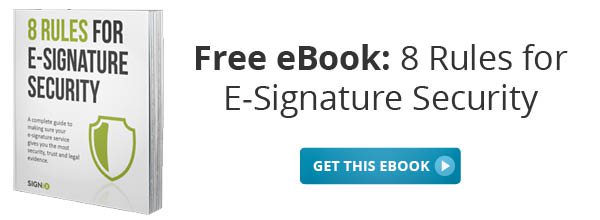The SIGNiX signing process is based on digital signatures, the ‘gold standard’ of electronic signature technologies. Our model is superior due to the fact that SIGNiX understands that signatures are a critical element of valuable transactions…not something that can simply be rendered with one click. As such, SIGNiX respects the value of our customer’s information and their transactions.
What about the SIGNiX solution is different?
- SIGNiX requires parties to the transaction to enter a Signing PIN (password) they created when accessing their signed documents, transactions and audit information. Administrators must also authenticate to view this information. Documents cannot be downloaded or viewed without this PIN.
- Although SIGNiX can readily be used as a storage service for documents, it is neither necessary nor recommended in most cases. SIGNiX recognizes that users have widely varying requirements for the storage of customer transactions and information and would prefer to take on the responsibility for storing those documents alongside other documents they already manage for their business. SIGNiX does keep a copy of the audit trail for evidentiary purposes, but this information is not publicly accessible from SIGNiX.
- SIGNiX does not require parties to a transaction to visit the SIGNiX site simply to verify an individual’s signature. Because SIGNiX uses digital signatures for each and every signature and initial in a signing transaction, this information is embedded directly into the PDF produced by the service, so that it is easy to track the integrity of a document from the first signature to the last, for the life of the document. Other eSignature vendors may add a digital signature after everyone has clicked to sign, meaning you have to rely on the vendor’s service to access this detailed information about each signature and version of the document in the process.
- SIGNiX requires users to authenticate to gain access to a signing transaction. The documents will not be displayed or made available to be signed unless the user is correctly authenticated. SIGNiX offers a wide range of authentication options that scale depending on the level of risk anticipated in the transaction, from simple email verification to SMS text messages to full knowledge-based authentication and identity vetting.
%20formatted-1.png?width=2528&height=739&name=SIGNiX%20Logo%20Main%20(white)%20formatted-1.png)

